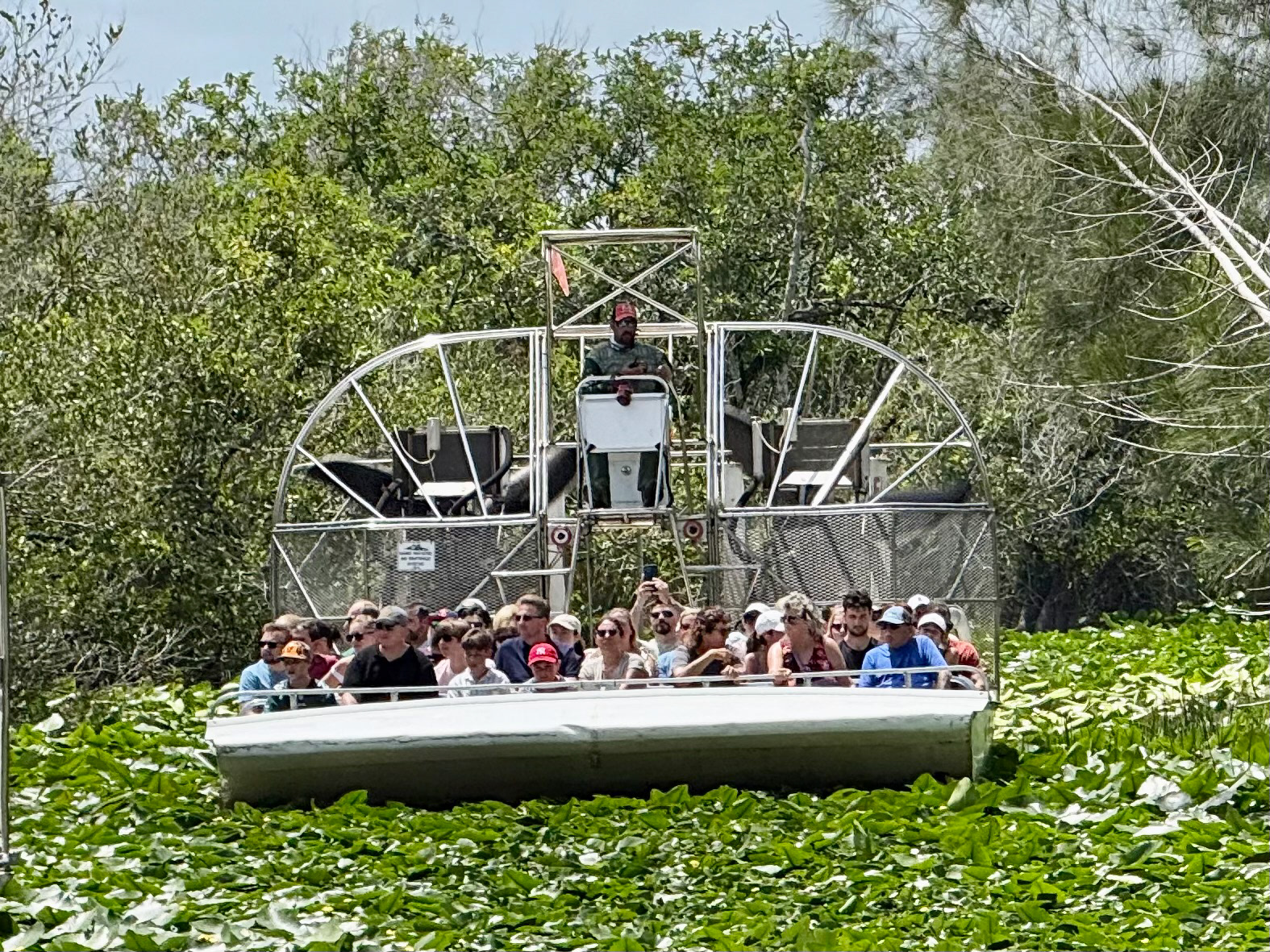The Keys were done.
All the planning, counting down, dreaming— now it was all behind us, folded into memory.
We weren't sad to leave. We'd seen it all—again. Laid-back days, time well spent. No regrets. Now we were northbound.
First stop—Robert Is Here. Edge of the Everglades. Fruit stand. Folklore. 1959, a kid starts selling fruit at six. Dad paints signs—Robert Is Here—plants them roadside. The story is legendary, so are the milkshakes.
Shakes still sweating in the cupholders, as we joined US-41, Tamiami Trail. We passed tin-roof stops—snacks, souvenirs, and airboat tours. Tour buses turning in - big business.




Next, the morning highlight, a visit to Clyde Butcher's Big Cypress Gallery.
I don’t remember exactly when I first saw Clyde Butcher’s work, but it must have been about twenty years ago. I was flipping through one of those glossy hotel magazines placed in rooms — part lifestyle escape, part condo pitch, part restaurant review. But somewhere between the sunshine spreads and the sales chatter, there he was.
The photo stopped me cold: a cypress swamp, dark water, trees thick with age, and Spanish moss hanging like old stories. The scene was quiet, but it wasn't empty. It felt alive. Still breathing. This wasn't brochure Florida. It was something older. Truer. A Florida before they paved paradise. Before the mega resorts and the cruise ships.
There was a photo of Clyde too—big man, Santa Claus beard, cowboy hat, chest-deep in swamp water. Suspenders over a sweat-softened shirt, one hand steady on a tripod, the other gripping a cable release. Beside him stood a large-format camera: solid, deliberate, built for the long wait. He didn’t look out of place. He looked like part of the landscape—rooted, still, and seeing what most people miss.
I needed to know more. I needed to see more.
Finding his work and story is not hard once you know about Clyde. He has two galleries—one in Venice, a quiet Gulf Coast town north of Fort Myers, and one deep in Big Cypress National Preserve, along the Tamiami Trail between Miami and Naples. His prints line the walls like open doorways into the wild. Towering black-and-whites of swamps, mangroves, and clouds so heavy with meaning they feel biblical.
You don't look at a Clyde Butcher photo — you step into it.
Clyde speaks about being at one with nature, not overthinking a shot, and just standing in the stillness and feeling it. An almost spiritual connection—like the land speaks first, and he listens. He doesn't compose with the camera. He sets up when it feels right—just knowing.
His work isn't just about beauty—it's about protection. He's spent decades showing us what we stand to lose. Swamps, wetlands, wilderness—the parts of Florida that don't make postcards. Through his black and white photographs, he's made a case for conservation that's louder than any protest sign.
He’s in his eighties now. A stroke in 2017, a new knee not long ago. Most would’ve called it time—folded the map, told the stories, let the light fade. Not this man.
Within weeks of the stroke, he was back in the swamps — Myakka this time — now with a digital camera in hand, using an adapted walker, doing what he’s always done: slowing down, seeing deep, waiting for the light to shift. Determined.
For a deeper insight into Clyde Butcher's journey and his profound connection to nature, you might find this video interesting.
He still prints. Still shows. Still reminds the rest of us what Florida really looks like when you get past the strip malls and condos. Towering trees, black water, storms building on the edge of the frame. His work’s not just about the wild — it is the wild. Rooted, patient, unshaken.
In October 2024, Biden gave him the National Medal of Arts. Long overdue, if you ask me.
Meeting Clyde.
I've had the privilege of meeting Clyde Butcher a couple of times—once in each of his galleries. I got a tour of the darkrooms and saw the gear and methods up close. And the prints, the size of the doors. Even better, I listened to his stories of wading through the wild, setting up in storms, close calls with nature, and quiet moments. Tales of exploration told slowly and steadily, like someone who's spent a lifetime letting the land teach him and all with wife Niki by his side.
The gallery staff told me he and Niki were in the gallery last week. The visit took on more than the planned meet and greet and turned into a peaceful protest against Alligator Alcatraz.
March 2012. Meeting Clyde wasn’t just meeting a photographer—it was standing in the presence of a true legend.


We walked the gallery slow. This wasn’t the Florida from postcards.
This was the Florida that came before all that.
This was the Florida that came before all that.